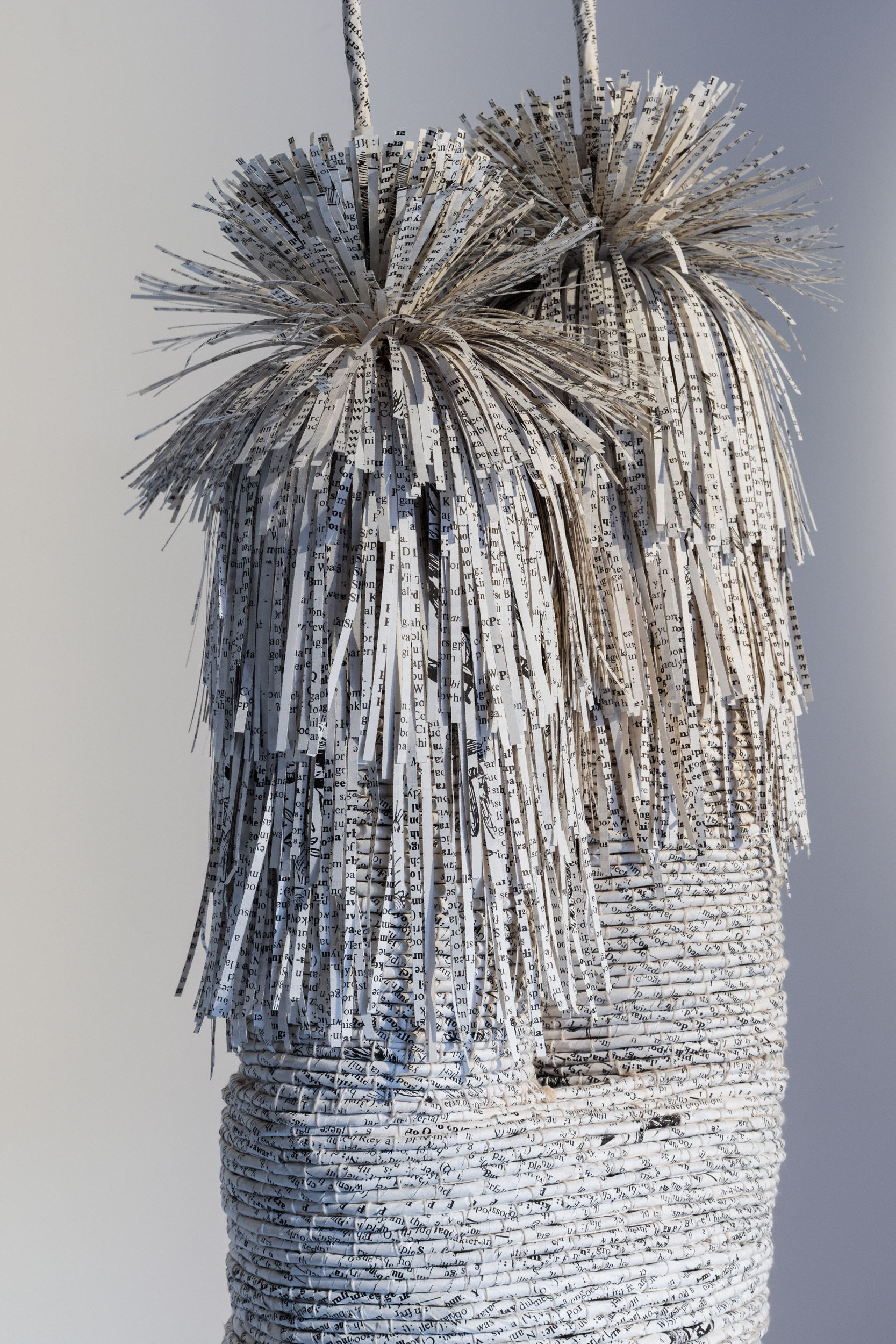Antecedent - a group show by Miranda Hine, Jenna Lee & Col Mac at Metro Arts, Meanjin
At Nudgee Beach during low tide, there are hard ridges in the sand known as ‘wave ripples.’ These undulations arrive through rolling currents which carve directions where water has flowed, leaving behind the skeleton of a wave. Their patterns evoke a sense of antecedence. They precede each-other, tapestry-like and continuous. This natural phenomenon is a visual imprint of time, yet parallels the way we capture sand in the form of an hourglass to find logic and measurement. A pattern of its own kind repeats: why must we force order where there is fluidity? In Antecedent, three Meanjin-connected artists come together in recognition of the threads bind their work. Together, in their singular styles, they investigate meaning, authorship, presentations of history, and subjectivity. Considering the past was written with bias, so too are the ways in which information has been categorised, contained and retold. History is an unreliable narrator.
Taking language as a starting point, Jenna Lee looks to acts of faux-categorisation. She draws on a text presented as a ‘dictionary’ titled Aboriginal Words and Place Names by A.W. Reed, still widely in circulation. Reed’s attempt to document First Nations language misinterprets the enormous variances in language groups across so-called Australia. As Lee explains, ‘there’s no such thing as “Aboriginal language.” There are hundreds of languages. The text presents words with no reference to where they came from. It was specifically published by collating compendium from the 1920s, 30s and 40s with the purpose to give [non-Indigenous] people pleasant-sounding Aboriginal words to name children, houses and boats. Yet, the first things taken from us were our language, children, land and water.’
Lee alchemises the paper of this book to create meaningful forms. Here, she presents a grass tree which she wove from the book’s pages to recreate this flourishing species that ‘thrives under elemental forces of deconstruction and reconstruction.’ Working with fire, Lee also presents two related series. One is an installation titled article-particle (Guyu-Gwa) made up of pigment jars labelled with the Gulumerridjin word for fire, in which the ashes of Reed’s text are contained.
The other presents pages of Reed’s book on which Lee has scorched Gulumerridjin language. As she tells, ‘In this context, fire becomes a tool of rejuvenation and rebirth, breathing new life into the previously dislocated words.’ Lee’s engagement with materiality always intersects with ancestry. A Gulumerridjin (Larrakia), Wardaman and Karra-Jarri Saltwater woman with mixed Japanese, Chinese, Filipino and Anglo-Australian heritage, Lee reflects her identity across disciplines with exquisite skill.
Words by Emma McLean who lives and works on Gadigal land
All images by Joe Ruckli






Grasstree (at rest)
192 x 32 x 32cm
Pages of ‘Aboriginal Words and Place Names’,
organic cotton thread, bamboo, rice starch glue,
bookcover board, wooden foot stool, fire
192 x 32 x 32cm
Pages of ‘Aboriginal Words and Place Names’,
organic cotton thread, bamboo, rice starch glue,
bookcover board, wooden foot stool, fire
Images Joe Ruckli. Courtesy the artist and MARS Gallery




article-particle (Guyu-Gwa)
Sizes various, 12 x 230cm installed
Various pigment jars, pages of ‘Aboriginal Words and
Place Names’, fire, label
Sizes various, 12 x 230cm installed
Various pigment jars, pages of ‘Aboriginal Words and
Place Names’, fire, label
Images Joe Ruckli. Courtesy the artist and MARS Gallery


Aboriginal words guyu-gwa (fire)
34.8 x 26.5cm framed
Page of ‘Aboriginal Words and Place Names’, fire
34.8 x 26.5cm framed
Page of ‘Aboriginal Words and Place Names’, fire
Aboriginal words irribuk (to light/lighter)
34.8 x 26.5cm framed
Page of ‘Aboriginal Words and Place Names’, fire
34.8 x 26.5cm framed
Page of ‘Aboriginal Words and Place Names’, fire
Aboriginal words belpbela (firestick)
34.8 x 26.5cm framed
Page of ‘Aboriginal Words and Place Names’, fire
34.8 x 26.5cm framed
Page of ‘Aboriginal Words and Place Names’, fire
Aboriginal words (cycle)
34.8 x 26.5cm framed
Page of ‘Aboriginal Words and Place Names’, fire
34.8 x 26.5cm framed
Page of ‘Aboriginal Words and Place Names’, fire
Images Joe Ruckli. Courtesy the artist and MARS Gallery